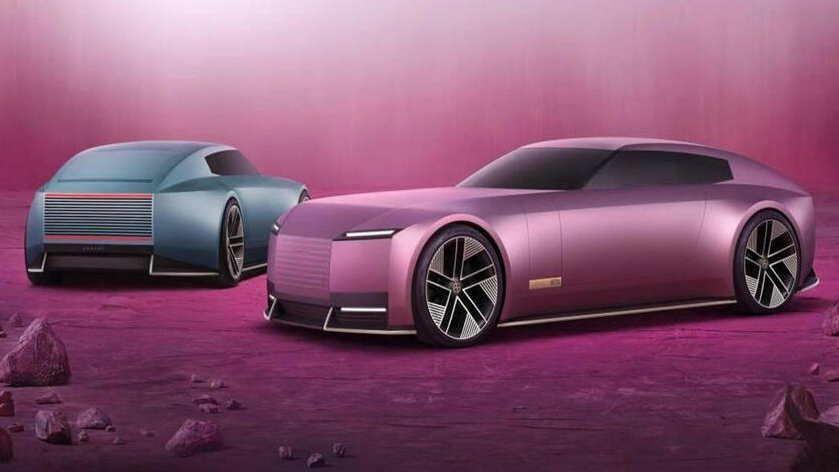7 web trends we'd be better off without
In web design, as in all areas of life, it’s good to be aware of the latest trends. But that doesn’t mean you have to follow them. In fact, in some cases they’re best avoided.
In this post, we talk to leading professionals about the current web trends they’d like to see disappear from the scene asap.
Some of these rants may be controversial, and in many cases, these trends can still arguably play a positive role, albeit when done thoughtfully, in the right circumstances.
But at the very least, it’s worth considering whether you should automatically follow the herd and ape these trends, without properly thinking through the ramifications first.
01. Overuse of popups

Standing for General Data Protection Regulation, GDRP is an EU privacy law brought in in 2016. But while it was introduced with the best of intentions, one side effect has been a tyranny of intrusive popups every time you browse to a new website.
“GDPR is mandatory in some cases, but even then, it can often be done less intrusively than often is,” argues Tom Hermans, a freelance web designer and developer based in Antwerp, Belgium. And he offers an eye-opening example. “I once met a client who asked why there wasn't a cookie notice popup on his site,” he reveals. “When I explained him that it was because the site didn't use cookies, he insisted I add one anyway, ‘because it looked professional’."
Hermans declined on that occasion. But he feels that many web designers don’t fight hard enough to persuade clients of the counterproductive effect too many popups can have on their business goals.
Daily design news, reviews, how-tos and more, as picked by the editors.
“A lot of the incentives come from the marketing departments in my experience,” he says. “A popup might aim to direct people to the company Facebook page, beg for likes, have desktop notifications turned on (WHO DOES THAT?!) and even, on a lot of newspaper sites, to switch on geolocation. The logic behind them, if you can call it that, is often: ‘Site X is doing it so why don't we?’
02. Live chat in-your-face
While we’re on the subject of popups, Robby Designs, a freelance web designer based in Plymouth, is particularly annoyed by the unthinking implementation of live chat popups.
“Like most trends online, live chat pop-ups do work when used properly,” he says. “But many website owners just jump on the bandwagon, thinking it's a magic fix.”
Why is that bad? “Like most people online, I want to look around first, to see if the website offers what I'm looking for, if I feel I can trust them, etc,” he reasons. “The problem is when the live chat box jumps up, gets in my way, and rarely even has a human there to answer my question anyway.”
So what’s his preferred way to implement live chat? “Better to just keep it down in the corner, ready if the user needs it,” he believes. “Perhaps pop-up after a minute or two with a friendly ‘Can I help?’.”
03. Hamburger menus on desktop

Grace Abell, a graphic designer based in York, points to a broad trend that everyone can surely agree is bad: “Desktop websites that look too close to the mobile site.” Of course, you could query whether this officially counts as a 'trend', ie a positive choice that designers are making. As Abell says, it's mainly "due to time constraints and a lack of inspiration."
But Michael Gearon, senior interaction designer at Companies House in Cardiff, points to a related phenomenon that certainly is worthy of the term: the use of hamburger menu (three horizontal lines stacked on top of each other) on the desktop versions of websites.
“Mobile hamburger menus on desktop devices is one web trend that should disappear,” he argues. “My opinion is that the majority of the time, this is primarily done for aesthetic reasons, placing form over function, especially where there might be only a handful of menu links.”
He concedes, though, that for large menus it may be beneficial to structure it in a hamburger menu format, even on a desktop website. In short, as with all the trends on this list, it’s not in the feature itself, but in its unthinking application that the problem lies.
04. Infinite scrolling
Now we’re getting into really controversial territory. Infinite scroll can be seen everywhere on the web right now, from personal blogs to social media platforms. But Andrew Minton, head of design at The Orchard Media and Events Group in Cardiff, sees it as a work of evil.
“I have a grudge for infinite scroll,” he says. “I believe it to be one of the factors in mental health issues in youngsters. FOMO (fear of missing out) effect, if you will.” If you want to dive deeper into the topic, Kerry Taylor has written an excellent post on exactly how infinite scroll rewires people’s brains, here.
05. "Click and hold to..."

“I don't like stuff that annoys users and doesn't add value to the experience,” says Michael Vestergaard, a UX engineer and creative coder from Copenhagen. "Click-and-hold has been used frequently on websites and games over the last year or so, for actions that should have just been normal buttons. It adds unneeded delays that are annoying and potentially make users leave your website.”
There are some situations when click-and-hold can be justified, Vestergaard accepts. “Such as for enabling re-ordering of list items, like Apple introduced in the iOS home screen. Or maybe for toggling an advanced function, as an alternative to a confirmation dialog.”
But most of the time, it's not about function: “it’s simply a fashion thing,” he complains. “Young designers and developers should always remember to avoid copying blindly. Maybe this interaction made sense somewhere else, but doesn't add value for your specific use-case.”
06. Adding things to “look nice”
Many of the trends listed here can be summed up in one mega trend: for aesthetics to trump functionality. That’s obviously a sad state of affairs, but one that Tom Hermans believes is still very much the default of some web designers, who are more focused on getting client sign-off than making their users happy.
“Some web designers just see trends and just follow,” he argues. “On one project, I asked 'Who uses those big Google Maps cards you often see on web pages?' The answer was: no one. But one designer said: ‘I don't use them, but I put them in my clients' sites because they look nice.’ The fact that he's unnecessarily loading a bunch of JavaScript, wasting screen real estate, etc, for no real reason didn't seem to occur to him.”
Countless modern annoyances could be said to fall under the banner of this trend. Chicago-based visual designer and UX architect Brian Coy bemoans the "over use of hovers to describe icons which have no meaning to users", arguing that "we've gotten icon-happy to try to cram too much noise into a single screen." Joel Hughes, director of Glass Mountains in Caerleon, south Wales, points to: "Top menu items which you cannot click," while Robby Designs adds to the list: "Mega-menus that don't hang around long enough for you to actually click that child-item."
Finally, Scottish designer Morven Mac calls out lazy use of parallax scrolling. "High-end sites have the budget and skills, and it can look fantastic when backed up with great images, video and really crisp design," she notes. But the bad news is: "It’s a function on many out-of-the-box WordPress themes, so a gimmick people overuse, and in such case, it only highlights below average images and site builds."
07. Oversharing on social media

Social media can be a useful, often vital tool for the web design community in keeping track of new technologies, sharing ideas and getting feedback. But for Neil Robert Leonard, a design educator and web developer based in Bristol, social oversharing has become a pet hate.
Take LinkedIn. “In the last year, there has been a trend for young employees and managers to share every business decision in the hope they can demonstrate how good at business they are,” he says. “Everyday activities and minor innovations are presented in the same regards as parting the seas. I think this oversharing is down to a lack of confidence in one's own abilities, and a need to be seen as being busy as proactive.”
Worse still, he adds, is the customer service overshare. “Business and employees need to appear caring has extended the sharing of pictures and long narratives every time an extra ten minutes are spent with an elderly customer,” Leonard complains. “While taking some more time with an elderly person is a lovely thing to do, it is a basic act of human kindness, and I find it distasteful that people are using this to add value to their business and social profiles.”
What’s worse, it’s becoming increasingly difficult to ignore people and companies you’re not interested in. “Previously, people could easily be unfollowed, hidden or blocked,” says Leonard. “But nowadays, most social media services insist on showing you the conversations and likes of the people you follow. Again, this can be turned off in settings, but I have found the best solution is to spend less time on social media generally.”

Tom May is an award-winning journalist specialising in art, design, photography and technology. His latest book, The 50 Greatest Designers (Arcturus Publishing), was published this June. He's also author of Great TED Talks: Creativity (Pavilion Books). Tom was previously editor of Professional Photography magazine, associate editor at Creative Bloq, and deputy editor at net magazine.
